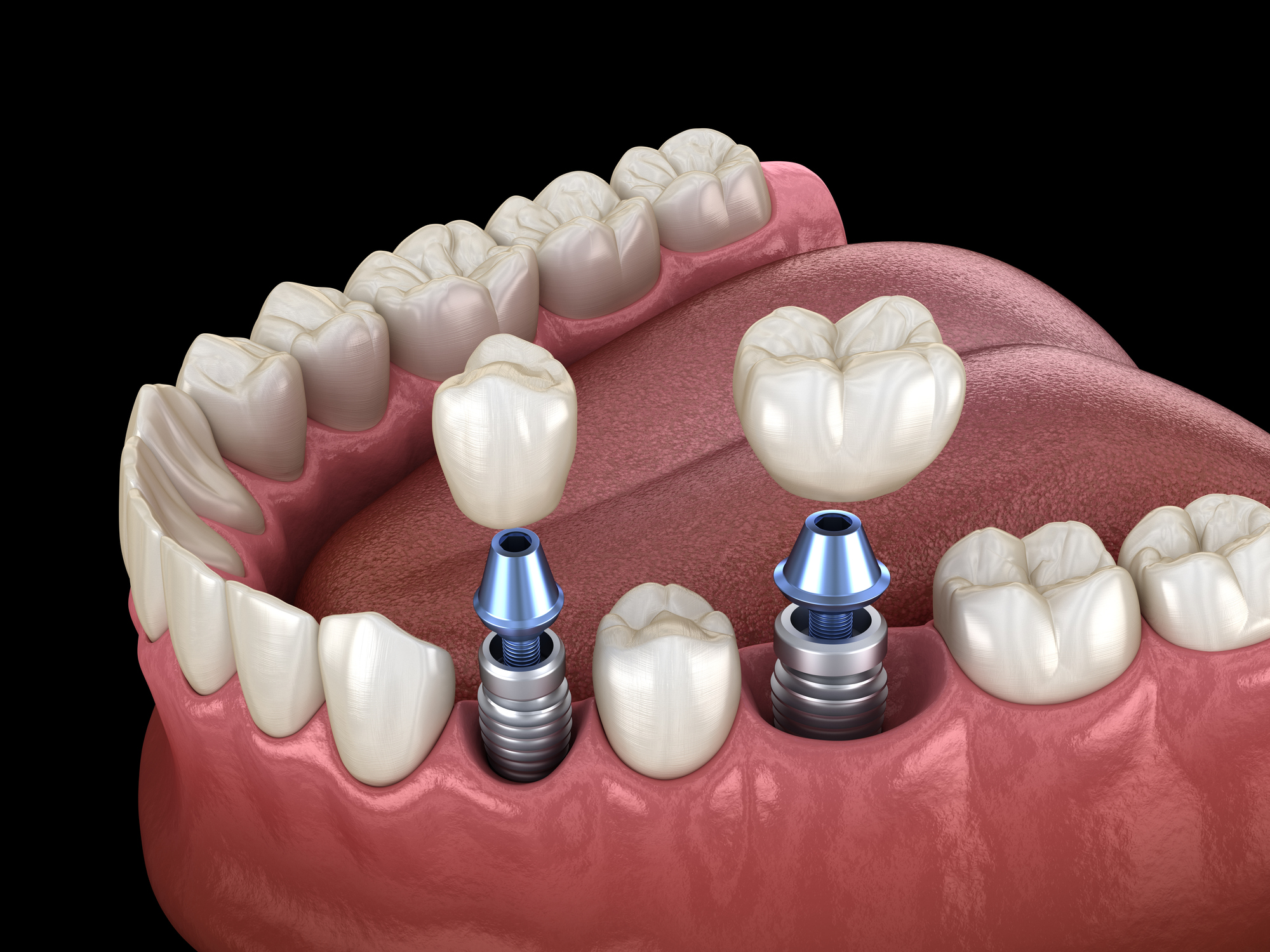Get This Report about Dental Sense
Wiki Article
Unknown Facts About Dental Sense
Table of ContentsThe Only Guide for Dental SenseThe Of Dental SenseOur Dental Sense StatementsDental Sense Things To Know Before You Get This
are clinical devices surgically dental implanted right into the jaw to restore a person's ability to eat or their appearance. They give assistance for synthetic (phony) teeth, such as crowns, bridges, or dentures. When a tooth is shed due to injury or illness, an individual can experience problems such as rapid bone loss, defective speech, or changes to eating patterns that cause discomfort.Dental implant systems contain an oral implant body and oral implant joint and might likewise consist of an abutment fixation screw. Dental implants. The oral implant body is surgically placed in the jawbone instead of the tooth's origin. The dental implant abutment is normally attached to the implant body by the joint addiction screw and expands via gums right into the mouth to sustain the attached artificial teeth
(https://medium.com/@matthewmusic33101/about)Structure of The Dental Implant System choosing dental implants, talk with your dental provider regarding the prospective benefits and risks, and whether you are a candidate for the treatment. Points to consider: Your general health and wellness is a vital factor in determining whether you are a good candidate for dental implants, for how long it will certainly take to recover, and the length of time the implant may remain in place.
Cigarette smoking might affect the recovery process and lower the long-lasting success of the implant. The recovery procedure for the implant body may take several months or longer, during which time you commonly have a temporary joint in location of the tooth. the dental implant procedure: Meticulously comply with the oral hygiene guidelines offered to you by your oral copyright.
The 8-Minute Rule for Dental Sense
Implant failure can result in the demand for an additional medical procedure to take care of or change the implant system. Brings back the capacity to eat Brings back aesthetic appearance Aids keep the jawbone from reducing due to bone loss Maintains the wellness of the bordering bone and gum tissues Helps maintain nearby (close-by) teeth secure Enhances quality of life Damage to surrounding all-natural teeth throughout implant positioning Injury to the surrounding tissues throughout surgical procedure, such as sinus opening Injury during surgical procedure (as an example, fracture of bordering jawbone) Insufficient function, such as seeming like the teeth do not bite together usually A sensation that the tooth hangs or twisting in area arising from an abutment screw loosening Implant body failure (looseness of the dental implant body) as a result of systemic infection, which might be more probable in people with uncontrolled diabetes mellitus due to click here for more local infection in bone and periodontals sustaining the dental implant body as a result of postponed recovery, which may be extra most likely in patients who smoke Trouble cleaning up the gum tissues around the dental implant, leading to poor dental health Unattended gum condition Post-surgical tingling due to nerve impingement or damages Always notify healthcare service providers and imaging service technicians that you have dental implants before any type of magnetic resonance imaging (MRI) or x-ray treatments.FDA is not knowledgeable about any kind of adverse events reported for MRI or x-ray treatments with dental implants. Dental implants systems are typically made of materials that comply with worldwide agreement criteria of the International Company for Standardization (ISO) or ASTM International. These requirements have details of what makes a safe material.

A dental implant is a structure that replaces a missing out on tooth. With screw-like devices, the specialist inserts a dental implant into the jawbone, and it acts as a support for an artificial tooth, called a crown.
Dental Sense Fundamentals Explained
Some people are not qualified for oral implant surgery. It is for dental doctors to operate on individuals with: severe illnessuncontrollable metabolic diseasebone or soft tissue illness or infectionIf these concerns are settled, an individual can have the surgery. In, oral doctors refrain from operating individuals with: If individuals with any one of the above undertake dental implant surgical treatment, there is a greater threat of the implant falling short.
Oral dental implant surgery is an individualized procedure. It's not the same for everyone. But the adhering to gives a general introduction of what you can anticipate your dental professional, oral specialist, periodontist or prosthodontist to do: Position the implant surgically. Provide you time to heal. Connect the post and last crown, bridge or denture.
Next off, your cosmetic surgeon will carefully put the oral implant into your jaw. Lastly, your doctor will rearrange your periodontals and shut the cut with stitches. If your dental implant is near the front of your mouth, your dental professional will make a momentary tooth for you to put on up until you heal. That way, you won't have a void in your smile while you recoup.
The Only Guide to Dental Sense
Your company can tell you what to expect in your scenario. Throughout the healing phase, your jawbone needs to fuse to the dental implant. This procedure, called osseointegration, is vital for security and long-lasting success. This procedure can take anywhere from 3 to 9 months. In some situations, it may take longer.As soon as your dental implant heals, your dental practitioner can connect the joint (tiny adapter blog post) and your final repair (crown, bridge or denture). This typically takes regarding one hour to finish and might require a 2nd small surgical treatment. You should not feel any kind of pain during your oral implant treatment since your copyright will utilize drug to numb your gums.
Report this wiki page